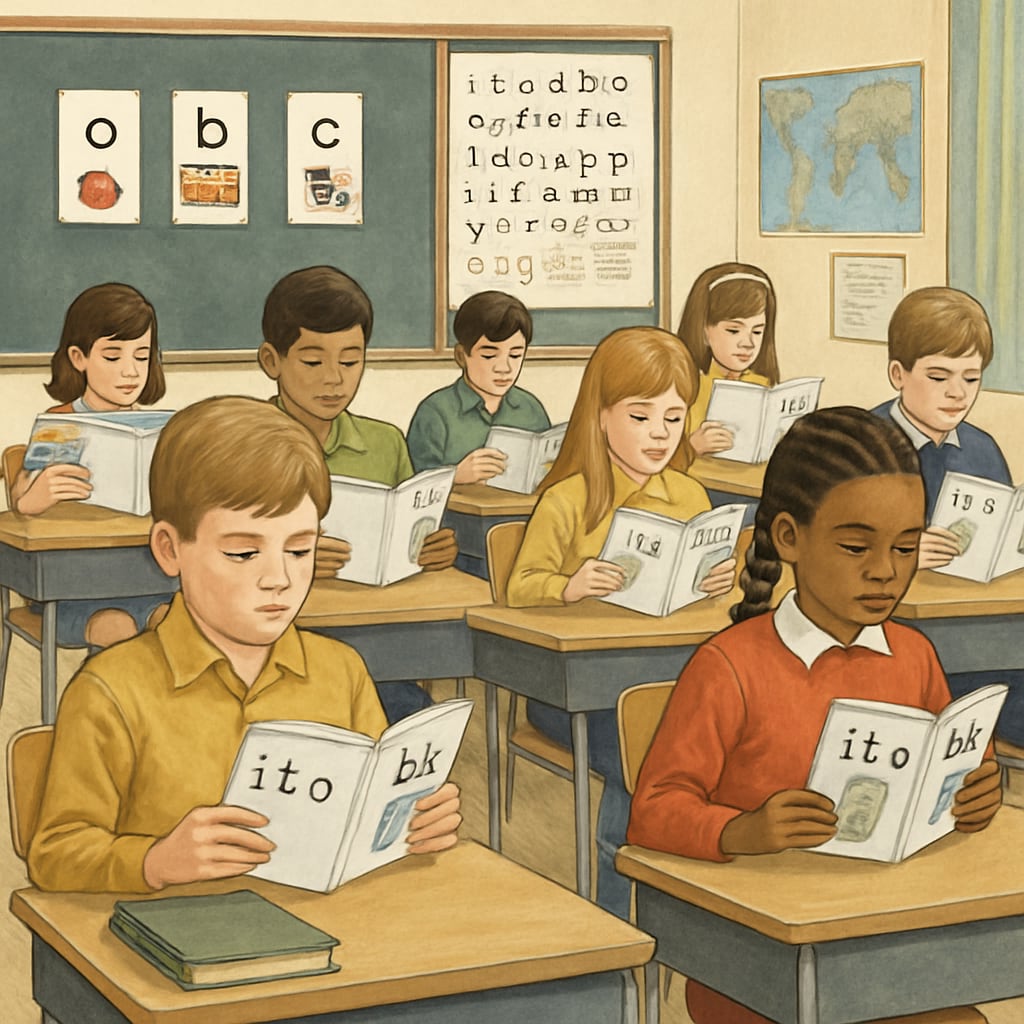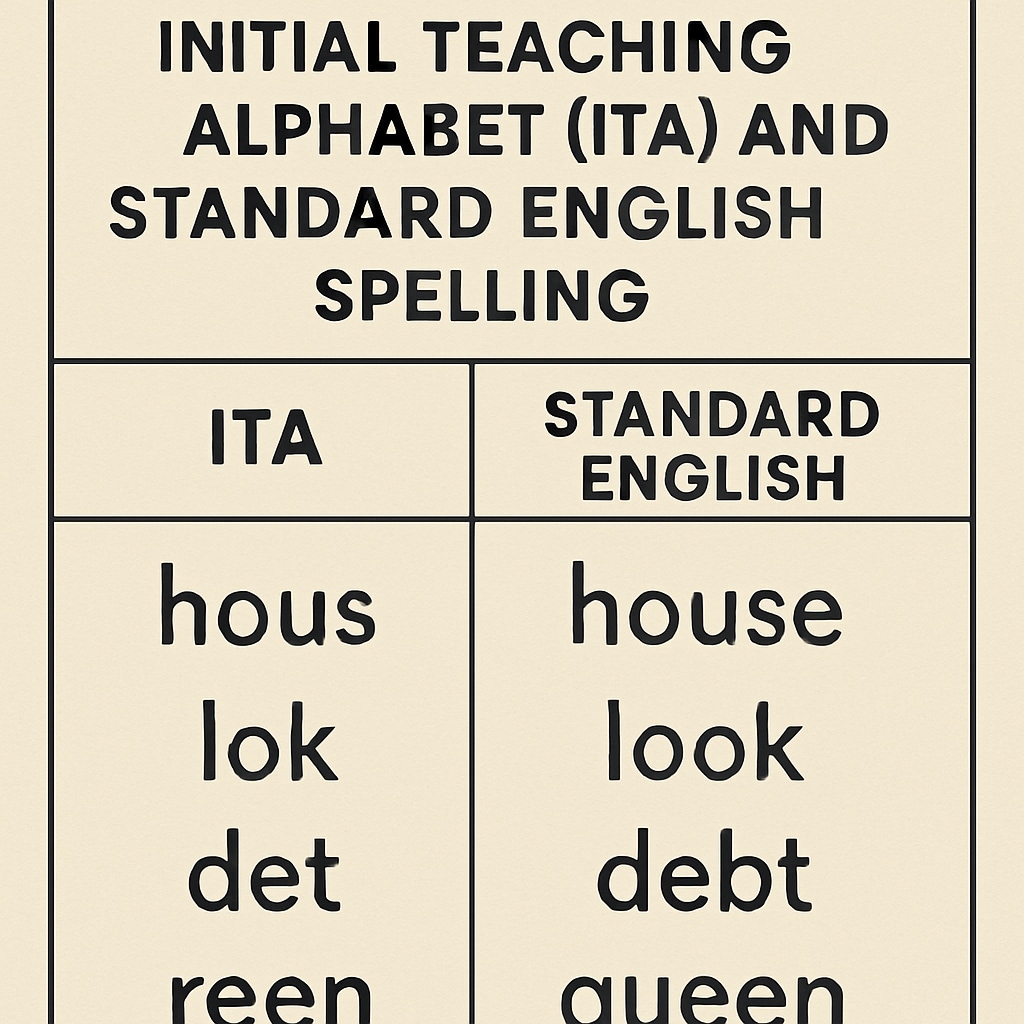The Initial Teaching Alphabet (ITA), introduced in the 1960s and widely adopted in the 1970s, was an experimental educational tool aimed at improving early reading skills. However, its long-term impact on spelling development raised concerns, leaving a mixed legacy in education. This article explores the history of ITA, its methodology, and the unintended consequences of its use, shedding light on the spelling challenges that emerged during the 70s.
The Origins and Goals of the Initial Teaching Alphabet
Developed by Sir James Pitman in 1960, the Initial Teaching Alphabet was designed to simplify the process of learning to read. ITA used a phonetic alphabet consisting of 44 symbols, representing the specific sounds of the English language. This method aimed to eliminate the complexities of traditional English spelling, which often confuses early learners due to inconsistent rules and irregularities.
Proponents of ITA argued that it could provide a smoother transition into literacy by aligning written symbols more closely with spoken sounds. As a result, many schools in the UK and the US adopted ITA as an experimental teaching method during the 1960s and 1970s. Teachers reported that students initially excelled in reading, displaying significant progress in decoding and comprehension.

Unintended Consequences: Spelling Difficulties and Beyond
Despite its early successes, ITA revealed critical shortcomings over time. One of the most notable issues was its negative impact on spelling skills. While ITA helped children quickly grasp the mechanics of reading, it failed to prepare them for the complexities of standard English orthography (spelling system). Transitioning from ITA to conventional English spelling often led to confusion, as students had to “unlearn” the phonetic system and grapple with traditional spelling rules.
For example, a child taught to read the ITA word “sed” (representing “said”) might struggle to adapt to its correct spelling later. This disconnect resulted in persistent spelling errors and an overall decline in written accuracy. Studies conducted during the 1970s revealed that students who learned with ITA often lagged behind their peers in spelling proficiency, even years after transitioning to standard English.
Moreover, critics argued that ITA’s reliance on an artificial system created additional cognitive burdens. Instead of building on the natural progression of language learning, students had to navigate a redundant layer of complexity, leading to frustration and diminished confidence in their abilities.

Lessons from the 70s: Educational Innovation and Its Limits
The rise and fall of ITA in the 1970s offer valuable lessons for modern educators. While innovation in teaching methods is essential, it must be carefully evaluated for long-term effectiveness. The Initial Teaching Alphabet, though well-intentioned, failed to account for the broader developmental needs of young learners, particularly in spelling and writing.
Key takeaways from the ITA experiment include:
- The importance of aligning early literacy tools with the end goal of mastering standard language conventions.
- The need for longitudinal studies to assess the full impact of new teaching methods before widespread adoption.
- The recognition that simplifying one aspect of learning (e.g., reading) may inadvertently complicate others (e.g., spelling).
As education continues to evolve, these lessons underscore the need for a balanced approach that considers both short-term gains and long-term outcomes.
Conclusion: The ITA’s Mixed Legacy
The Initial Teaching Alphabet represents both the promise and pitfalls of educational experimentation. While it succeeded in improving early reading skills, its lasting impact on spelling proficiency raised important questions about its overall efficacy. The 70s era of ITA adoption serves as a reminder that even the most innovative teaching tools must be tested rigorously and implemented cautiously.
Today, the educational community continues to debate the best methods for fostering literacy. By reflecting on the ITA’s history, educators and policymakers can make more informed decisions, ensuring that future innovations truly benefit students in the long run.
Readability guidance: This article uses short paragraphs, transitions (e.g., “however,” “as a result”), and lists to improve clarity. Images are integrated to support understanding, and passive voice is minimized for increased engagement.


